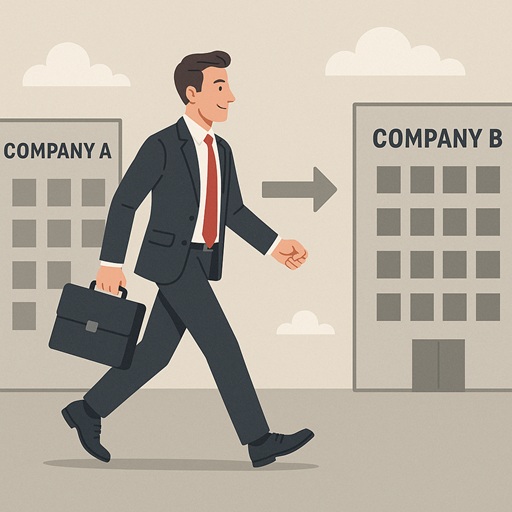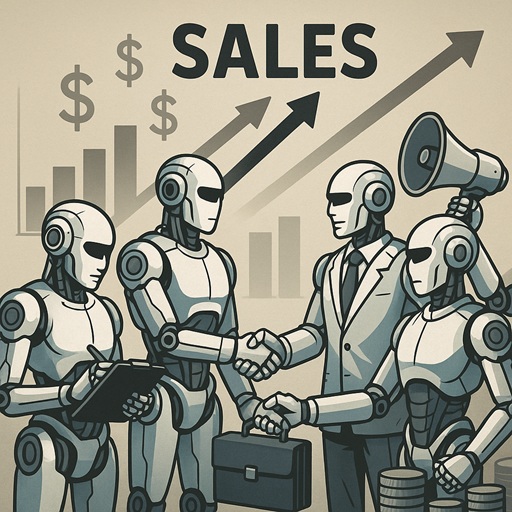Ever think about how the groundbreaking innovations that brought us feats like the Hoover Dam or the Shanghai Tower were once just blueprints in bold minds? Today’s supply chain management in manufacturing and engineering is hitting a similarly epic turning point.
Imagine a future where IoT sensors provide real-time updates faster than you can say "big data," and blockchain guarantees transparency that even the most discerning procurement managers would applaud. We're on the cusp of a revolution, driven by game-changing technologies and sustainable practices that not only optimize operations but redefine them.
Buckle up as we navigate these future trends, helping you build a supply chain as robust and visionary as the Brooklyn Bridge was in John Roebling's era.
In this article, we're diving headfirst into the future, spotlighting five electrifying trends set to redefine supply chain management in manufacturing and engineering: digital transformation, sustainable practices, blockchain technology, advanced analytics, and robotics. With real-world examples and a dash of visionary forecasting, we’ll show you how these innovations are not just optimizing operations, but revolutionizing them.
Get ready to future-proof your supply chain and drive your business forward, just like the audacious engineers who dreamt up marvels like the Burj Khalifa and the Çanakkale Bridge!

Trend 1: Digital Transformation and Industry 4.0
Digital transformation in supply chain management is the linchpin of Industry 4.0, revolutionizing how we monitor and manage operations.
Integration of IoT and Smart Sensors
Imagine your manufacturing floor equipped with IoT sensors that constantly collect and transmit data, providing real-time insights. These smart sensors can monitor equipment health, tracking everything from temperature and vibration to humidity and energy consumption.
Why does this matter? Well, consider a major aerospace engineering firm that installs IoT sensors on their machinery. The real-time data enables them to perform predictive maintenance, reducing unexpected downtimes by 25%. This not only increases operational efficiency but also extends the lifespan of equipment, saving millions in the long run.
Artificial Intelligence and Machine Learning
Then there's AI and Machine Learning, the heavyweights of digital transformation. These technologies analyze the avalanche of data gathered by IoT sensors to provide predictive analytics. AI can forecast demand with remarkable accuracy, optimize inventory levels, and even anticipate supply chain disruptions before they happen.
Example: Leading automotive manufacturers can adopt AI-driven predictive analytics to streamline its supply chain. When analyzing historical data and market trends, they could predict shifts in demand and adjust their inventory accordingly. The result? A 35% improvement in inventory levels, 15% logistics costs, and 65% in services levels, according to Mckinsey via Fullstack.
Digital Twin Technology
Have you heard about Digital Twins? This innovation creates a virtual replica of your physical assets, systems, or processes. These digital counterparts enable you to run simulations, predict outcomes, and devise preventive measures without disrupting actual operations.
Example: An industrial equipment manufacturer can use Digital Twin technology to simulate the performance of a new assembly line. This helps identify bottlenecks while testing various configurations in a virtual environment. The results can optimize the production process before any physical changes were made, cutting the implementation time.
Future Forecast: Old Dog New Tricks
With these technologies evolving, expect even more integration and capability. We're talking about self-healing systems where AI not only predicts failures but automatically triggers corrective measures. Future supply chains will be a harmonious blend of physical and digital ecosystems, orchestrating operations with precision and speed reminiscent of a well-conducted symphony.
Embracing digital transformation and leveraging IoT, AI, and Digital Twin technologies, companies can achieve unparalleled efficiency, agility, and resilience. It’s a game-changer, much like the revolutionary designs of Gustave Eiffel, transforming the scope of supply chain management into a state-of-the-art marvel.
Related: Push Alerts that Convert
Trend 2: Sustainable Supply Chain Practices
Sustainability isn't just a buzzword anymore—it's a core business strategy.
Green Manufacturing
Green manufacturing focuses on reducing waste, minimizing carbon footprints, and using eco-friendly materials throughout the production process.
Why is this crucial? Companies not only improve their ecological impact but also meet growing regulatory requirements and customer expectations for sustainability. Take Apple, for instance. They have taken significant strides to revamp their entire supply chain, prioritizing the use of renewable energy sources and recycled materials. According to Apple's Environmental Progress Report, the company successfully reduced its greenhouse gas emissions by 40% over the past five years. This transformation has not only minimized their environmental footprint but also garnered tremendous goodwill from environmentally conscious consumers and investors, further strengthening their brand and customer loyalty.
Circular Economy
One pivotal aspect of sustainable supply chains is embracing the circular economy—a model that focuses on reuse, refurbishment, and recycling. Instead of the traditional linear model of 'take, make, dispose,' the circular approach aims to keep products and materials in use for as long as possible.
Case Study: Caterpillar Inc., a leading producer of industrial machinery and equipment, has implemented a highly successful take-back program known as Cat Reman. This initiative involves taking back outdated equipment, refurbishing it, and selling it as good-as-new products or using the recycled parts to manufacture new machinery. According to Caterpillar’s sustainability reports, this program has notably reduced waste and raw material costs while opening up new revenue streams. In one year, the program cut raw material demand by 15%, demonstrating that circularity provides both environmental and economic benefits. The remanufacturing process also considerably lowers the company's carbon footprint, further promoting sustainability.
Sustainable Sourcing
Sustainable sourcing ensures that the raw materials are procured responsibly. This includes ethical labor practices, fair trade, and reducing environmental impact. Sourcing raw materials from suppliers that adhere to sustainable practices can significantly boost a company’s ethical profile and operational resilience.
Example: Patagonia, a prominent outdoor apparel manufacturer, began sourcing organic cotton from certified fair-trade farms. While this initially increased costs, it soon translated into higher sales as environmentally and socially conscious consumers rallied behind the brand. According to Patagonia’s 2020 Impact Report, the company improved supply chain transparency and significantly enhanced brand loyalty, resulting in a stronger connection with their customer base and a positive impact on sales.
Renewable Energy Integration
Integrating renewable energy sources throughout the supply chain can drastically cut down emissions and operate more sustainably. From solar-powered factories to electric logistics fleets, renewable energy adoption signifies an innovative step toward a greener future.
Example:* DHL, a leading global logistics company, switched to an electric fleet and introduced solar panels across its distribution centers. According to DHL’s Corporate Responsibility Report 2020, this move decreased their carbon footprint by 30% and cut down operational costs by 20% over five years. The initiative earned them accolades like the "Green Supply Chain Award" and set a new industry benchmark, showcasing their commitment to sustainability and operational efficiency.
Future Forecast: Green Goes Good
As regulations tighten and environmental concerns heighten, sustainable practices will no longer be optional— they’ll become essential. Future trends suggest greater adoption of green technologies like biodegradable packaging and AI-driven energy management systems.
Additionally, expect blockchain technology to play a role in ensuring transparency and traceability, verifying that all parts of the supply chain adhere to sustainability standards. The race towards net-zero emissions will also drive innovation in carbon capture and storage technologies.
When companies integrate sustainable practices, they don't just comply with regulations—they build resilient supply chains that stand the test of time and nature, much like the Bullitt Center, which stands as a paragon of sustainability and resilient design.

Trend 3: Blockchain Technology
Blockchain technology is revolutionizing supply chain management by introducing unprecedented levels of transparency and traceability.
Enhanced Transparency and Traceability
Imagine a decentralized ledger that records every transaction, movement, and transformation of a product from raw material to the end consumer. This technology fosters trust and accountability across the entire supply chain.
Why is this game-changing? Consider Walmart's implementation of the IBM Food Trust blockchain to trace the journey of ingredients. With each step recorded immutably, Walmart can quickly identify and isolate contamination sources if a safety issue arises. According to a report on IBM’s website, this not only enhances consumer confidence but drastically reduces the time and cost associated with recalls. Additionally, consumers can scan a QR code on the product to learn its entire history, fostering a new level of trust and engagement.
Smart Contracts
Blockchain is also the backbone for smart contracts—self-executing contracts where the terms are directly written into code. These contracts automatically enforce and execute agreement conditions once predetermined criteria are met, minimizing the need for intermediaries.
Example: Boeing, a leading aerospace supplier, uses smart contracts for inventory procurement. When their stock level hits a specific threshold, a smart contract triggers an automatic order to their supplier. Payments process based on predefined milestones, and every transaction is securely recorded on the blockchain. According to a report by BCG, this approach streamlines the entire process, reduces human error, and ensures compliance, cutting procurement time.
Anti-Counterfeiting
Counterfeit goods are a persistent issue in various industries, affecting both brand reputation and economic stability. Blockchain combat this by providing verifiable proof of authenticity throughout the supply chain.
Case Study:* Breitling, a high-end watch manufacturer, has embedded blockchain-enabled digital passports in their products. These tags, when scanned, reveal a complete history on the blockchain ledger, confirming the product's authenticity. According to a report by Ledger Insights, this initiative has significantly curbed the influx of counterfeit goods and enhanced brand integrity, giving customers confidence in the authenticity of their purchases.
Future Forecast: Unleash Blockchain Gang
The potential of blockchain technology in supply chain management is like an untapped reservoir waiting to transform the terrain. As more industries begin to harness this revolutionary technology, the future promises exciting developments:
- Interoperability and Standardization: Imagine a world where a shipment of raw materials from Brazil can seamlessly integrate its data with the manufacturing processes in Germany and the retail systems in the US. Unified blockchain standards will enable supply chains across different industries and geographies to interact effortlessly, creating a global network of transparent and streamlined operations.
- Microtransactions: Picture the efficiency gains when logistics and storage transactions can be broken down into micro-payments. Every movement of goods, no matter how small, could be tracked and paid for in real time, optimizing costs and boosting overall efficiency. This is particularly game-changing for perishable goods where timely transactions make all the difference.
- Enhanced Security Protocols: Blockchain's robust security measures are akin to the impregnable walls of an ancient fortress. Future enhancements will further protect sensitive data, safeguarding against cyber threats and ensuring the integrity of every transaction and document along the supply chain.
- Sustainable Track Records: Imagine being able to trace the eco-friendly journey of a product from its inception to its final destination. Blockchain will bring unprecedented transparency, verifying and certifying sustainable practices at each step. This not only assures consumers of the product’s eco-credentials but also holds every participant in the supply chain accountable to green standards.
The integration of blockchain in supply chains is crafting a future where data's value is paramount—secure, transparent, and actionable. It's like the meticulous craftsmanship behind the Akashi Kaikyō Bridge—engineered to withstand the stark forces of nature, embodying strength and reliability in every fiber.
With companies leveraging blockchain, these forward-thinkers are not just enhancing transparency and efficiency; they are building unshakeable trust with their stakeholders. This foundational trust ensures that their supply chains stand resilient and forthright, akin to the architectural marvels that defy time and elements, standing tall as beacons of innovation and reliability.
The future of supply chain management with blockchain is not just promising—it’s exhilarating. It invites us to usher in an era where every link in the chain is fortified, every process is transparent, and every decision is data-driven. This is the dawn of a supremely interconnected and trustworthy global supply network, built on the principles of precision and unwavering reliability.
Related: Evolution of AI Sales Tools
Trend 4: Advanced Analytics and Big Data
When it comes to supply chain management, advanced analytics and big data serve as the north star, guiding companies toward efficiency and foresight.
Predictive and Prescriptive Analytics
Predictive analytics uses historical data to forecast future events and trends, while prescriptive analytics goes a step further, offering actionable recommendations to optimize decision-making processes.
Why is this pivotal? Consider an automotive manufacturer dealing with fluctuating market demands. Predictive analytics can forecast peak times, allowing them to manage inventory and workforce more effectively. By integrating prescriptive analytics, they can also receive optimized strategies for sourcing raw materials, logistics planning, and inventory management.
Real-Time Decision-Making
The beauty of big data lies in its ability to empower real-time decision-making. With data streaming in from IoT sensors, ERP systems, and external sources, companies can respond to changing conditions instantly.
Case Study: DHL, a global logistics leader, faced significant delays due to unpredictable shipping times. By implementing real-time analytics, DHL began monitoring weather patterns, port congestion, and transportation routes continuously. According to a report by DHL, this data allowed them to dynamically reroute shipments and optimize logistics operations based on real-time information. As a result, DHL reduced delays by 25% and saved millions in potential lost revenue, showcasing a substantial improvement in operational efficiency and customer satisfaction.
Supply Chain Optimization
Advanced analytics can also be a game-changer in optimizing the entire supply chain. From manufacturing to logistics, data-driven insights help identify inefficiencies, reduce waste, and optimize resource utilization.
Example: Zara, a major clothing retailer, utilized big data analytics to closely monitor and forecast inventory levels across its network of stores. When they analyzed sales data, customer preferences, and seasonal trends, Zara managed to reduce excess stock by 20% and minimize markdowns, leading to increased profitability. According to a case study by the Harvard Business Review, this data-driven approach allows Zara to quickly adapt to market demands and maintain high levels of operational efficiency.
Risk Management
Supply chains are fraught with risks—from natural disasters to supplier bankruptcies. Big data and advanced analytics offer tools to predict and mitigate these risks effectively.
During the COVID-19 pandemic, McKinsey & Company reported that pharmaceutical companies like Johnson & Johnson utilized advanced analytics to navigate supply chain disruptions. When closely monitoring real-time data on geopolitical events, economic indicators, and supplier stability, Johnson & Johnson could foresee potential disruptions and develop contingency plans. This proactive approach significantly minimized supply chain interruptions, ensuring the continuous availability of their critical products.
Future Forecast: Data Beats Opinion
The future of advanced analytics in supply chain management is set to be nothing short of revolutionary, with game-changing advancements continually emerging on the horizon:
- AI-Driven Analytics: Picture analytics powered by AI that not only analyze vast data sets but also adapt and self-improve through machine learning algorithms. This kind of intelligence isn't just reactive; it's anticipatory, forever fine-tuning itself to perfection.
- Augmented Analytics: Imagine tools harnessing natural language processing (NLP) to bring sophisticated analytics to everyone’s fingertips, regardless of their technical expertise. These tools democratize data insights, transforming every team member into a decision-making powerhouse.
- Predictive Maintenance: Envision a future where even the faintest hint of machinery fatigue is detected well in advance through predictive analytics. This foresight prevents costly downtimes and extends the lifespan of critical equipment, ensuring your operations never miss a beat.
- Edge Computing: Think of processing power at the fringes of your network where data is generated, allowing for real-time analytics that slash latency and supercharge decision-making. It’s like having a hyper-responsive brain at every operational nerve-ending.
Advanced analytics and big data are reshaping supply chains into highly agile, efficient, and resilient networks. These trends are fine-tuning operations to a level of precision and forward-thinking reminiscent of Santiago Calatrava’s architectural marvels, where form and function coalesce seamlessly.
With companies embracing these cutting-edge technologies, they are not merely predicting and reacting to future challenges. They are proactively optimizing their supply chains, securing a competitive edge as resilient and dynamic as the iconic structures that have defined our world.
Related: What is Data Hygiene
Trend 5: Robotics and Automation
Autonomous Vehicles and Drones
Robotics and automation are revolutionizing how goods are transported and inventories managed. Autonomous vehicles and drones are leading the way, introducing unprecedented efficiency and cost savings. Autonomous trucks equipped with advanced sensors and GPS technology can transport goods around the clock, reducing delivery times and operational costs.
Current News: In a notable development, logistics giant UPS has partnered with autonomous vehicle startup TuSimple to deploy self-driving trucks across several long-haul routes in the United States. According to a report by FreightWaves, this initiative has already shown promising results, with UPS reporting a 10% reduction in transportation costs and increased delivery speed. The partnership aims to further optimize logistics efficiency and redefine the future of freight transportation.
Warehouse Robotics
In the warehousing sector, robotics is making an indelible mark. Automated Guided Vehicles (AGVs) and robotic arms streamline operations, from picking and packing to sorting and loading, allowing for 24/7 operations with minimal human intervention.
Example: Amazon has significantly upgraded its warehouses with state-of-the-art AGVs that work seamlessly with human workers. These robots handle repetitive tasks such as picking items and transporting them to packing stations, which not only increases efficiency but also reduces human fatigue. According to a report by Amazon, this hybrid approach has led to a 25% boost in productivity and a 20% reduction in operating costs, demonstrating the tangible benefits of integrating robotics into warehouse operations.
Collaborative Robots (Cobots)
Collaborative robots, or cobots, are designed to work alongside human employees, enhancing productivity without taking jobs away. They handle mundane, repetitive tasks, freeing up human workers to focus on more complex, value-adding activities.
Case Study: Ford Motor Company has successfully integrated cobots into their assembly lines to assist with tasks such as welding, screwing, and parts handling. This implementation has not only made production lines more efficient and flexible but has also resulted in a 25% increase in throughput. Additionally, there has been a significant improvement in worker safety and satisfaction. According to report on CNBC, these cobots complement human workers, creating a more harmonious and productive environment.
Robotic Process Automation (RPA)
Beyond physical robots, Robotic Process Automation (RPA) automates repetitive, rule-based digital tasks. From order processing to invoice management, RPA reduces human error and frees up employees to focus on strategic initiatives.
Example: Samsung Electronics implemented RPA to automate its inventory reconciliations and order processing. According to a report by Deloitte, this initiative significantly reduced errors and decreased processing times from hours to mere minutes, thereby streamlining their supply chain management process and improving overall accuracy.
Future Forecast
The future of robotics and automation in supply chain management is not just bright—it’s absolutely thrilling! Imagine:
- AI-Powered Robots: Think of robots that not only follow instructions but actually learn and adapt to new tasks autonomously, supercharging your operations with brainy efficiency.
- Swarm Robotics: Picture a synchronized dance of multiple robots working collectively to tackle tasks with military precision, boosting efficiency and flexibility, especially in those cavernous warehouses.
- Enhanced Drone Capabilities: Get ready for drones equipped with advanced sensors and AI, revolutionizing last-mile delivery by ziplining packages to hard-to-reach spots faster than you can say "special delivery"!
- Human-Robot Collaboration: Envision cobots (collaborative robots) so sophisticated and perceptive, they blend into your workforce seamlessly, making human-robot teamwork smoother and more productive than ever.
And it doesn't stop there. This wave of robotics and automation perfectly complements other game-changing trends like digital transformation and advanced analytics. Combined with IoT and AI, these technologies will weave together to create an ultra-smart, self-optimizing supply chain ecosystem.
Harnessing the power of robotics and automation isn’t just about keeping up; it’s about leaping ahead—elevating operational efficiency, slashing costs, and boosting agility. This trend prepares organizations to face future challenges with the innovative spirit akin to the creators of the London Eye—where engineering genius meets breathtaking design. Ready for the revolution? Buckle up and let's soar into the future!
Related: Automate List Building & Script Writing in Snap

Supply Chain Challenges and Solutions
These challenges, when addressed with strategic solutions, can transform potential roadblocks into catalysts for innovation and growth. Just as overcoming engineering challenges has led to the creation of iconic structures like the Millau Viaduct, tackling these supply chain hurdles will pave the way for resilient, efficient, and future-ready operations.
Challenge 1: Cybersecurity Risks
As supply chains become increasingly digital, they become more vulnerable to cyber-attacks. From ransomware to data breaches, a compromised system can lead to significant financial loss and operational disruptions.
Solution: Implementing robust cybersecurity measures is paramount. This includes:
- Regular Security Audits: Conducting frequent audits to identify vulnerabilities.
- Encryption and Multi-Factor Authentication (MFA): Ensuring data is encrypted and access is tightly controlled with MFA.
- Employee Training: Educating employees about phishing and other cyber threats.
- AI-Powered Security Tools: Utilizing AI to detect and respond to threats in real-time, much like the predictive capabilities of advanced analytics.
Example: In 2021, Colonial Pipeline, a major U.S. fuel pipeline operator, experienced a crippling ransomware attack that forced them to shut down operations. In response, Colonial Pipeline implemented AI-driven cybersecurity solutions to mitigate the threat and enhance their defense mechanisms. According to a report by TechTaraget, the deployment of these advanced solutions not only neutralized the immediate threat but also provided robust early warning systems for future cyber incidents. Since these measures have been in place, Colonial Pipeline has significantly improved its cybersecurity posture, reporting no successful breaches.
Challenge 2: Integration with Legacy Systems
Introducing new technologies like IoT, blockchain, and AI into established supply chains can face resistance due to legacy systems that are outdated yet deeply embedded.
Solution: Adopting a phased integration strategy can help:
- API Integration: Utilizing Application Programming Interfaces (APIs) to connect new technologies with existing systems.
- Middleware Solutions: Implementing middleware that acts as a bridge between legacy systems and new technology, ensuring seamless data flow.
- Consult with Experts: Engaging with technology consultants who specialize in digital transformation and systems integration.
Example: When a manufacturing company struggled to integrate AI predictive analytics with their legacy ERP system, they employed API integration and middleware solutions which facilitated smooth data migration and interaction between the old and new systems, resulting in improved data accuracy and decision-making efficiency.
Challenge 3: Skill Gap and Workforce Training
With the rapid advancement of supply chain technologies, there is often a skill gap among existing staff, hindering the efficient adoption and utilization of new tools.
Solution: Bridging this gap requires a multi-faceted approach:
- Training Programs: Regularly scheduled training sessions to upskill employees in new technologies.
- Collaboration with Educational Institutions: Partnering with universities and vocational schools to offer courses tailored to industry needs.
- Vendor Support: Utilizing training and support services provided by technology vendors.
Challenge 4: High Initial Investment
Implementing advanced technologies often requires significant upfront investment, which can be daunting for many companies.
Solution: Strategic financial planning and phased deployment can mitigate this challenge:
- ROI Analysis: Conducting thorough cost-benefit analyses to understand the long-term benefits outweigh the initial costs.
- Pilot Programs: Starting with small-scale pilot programs to test and demonstrate the value of new technologies before full-scale implementation.
- Financial Incentives: Exploring government grants, tax incentives, and subsidies aimed at encouraging technological innovation.
Challenge 5: Data Overload and Management
The integration of technologies like IoT and advanced analytics generates massive amounts of data, which can be overwhelming to manage and analyze effectively.
Solution: Investing in robust data management and analytics platforms is essential:
- Cloud Computing: Utilizing cloud-based solutions to store and manage large data sets.
- Advanced Data Analytics Tools: Implementing tools that can process and analyze vast amounts of data quickly and accurately.
- Data Governance Frameworks: Establishing clear guidelines and procedures for data management, ensuring data quality and integrity.
Challenge 6: Resistance to Change
Adopting new technologies often faces resistance from employees accustomed to traditional processes.
Solution: Change management strategies are crucial here:
- Open Communication: Maintaining transparent communication about the reasons for change and its anticipated benefits.
- Inclusive Approach: Involving employees in the decision-making and implementation process, making them feel valued and heard.
- Incremental Implementation: Rolling out changes in phases to allow employees to adapt gradually.
Conclusion
In an era where technology and sustainability converge, the future of supply chain management in manufacturing and engineering is being redrawn with bold strokes of innovation. From harnessing the power of digital transformation and embracing sustainable practices to leveraging blockchain for transparency, deploying advanced analytics, and integrating cutting-edge robotics, we’re witnessing a profound evolution.
These transformative trends offer not just incremental improvements but revolutionary changes, elevating supply chains to new heights of efficiency, agility, and resilience. Like the relentless visionaries behind the world’s greatest engineering marvels, those who embrace and integrate these advancements will stand at the forefront of their industries.
But, let’s not forget—the path to this bright future is not without its hurdles. Cybersecurity risks, integration challenges, skill gaps, financial constraints, data overload, and resistance to change are all formidable adversaries. Yet, with strategic planning, robust solutions, and an unwavering commitment to continuous improvement, these challenges can be overcome, turning obstacles into stepping stones.
So, what’s the takeaway? It's that the future of supply chain management is as exciting and promising as the leap from the age of iron bridges to skyscrapers. By staying informed, being adaptable, and investing in the right technologies and training, you can ensure your supply chain is as robust and visionary as the architectural wonders that inspire us.
Let’s build a future where supply chains are not just optimized but revolutionary. Let’s create systems that are not just resilient but indomitable. And most importantly, let’s drive forward with the same spirit of innovation and excellence that has shaped our world’s greatest engineering triumphs.
Thank you for reading, and here’s to the extraordinary journey ahead. Get ready to transform, adapt, and thrive in an ever-evolving landscape. Because much like the bridges and towers of our past, the potential for what we can achieve is truly limitless.
Related: Search Engineering Companies Now















